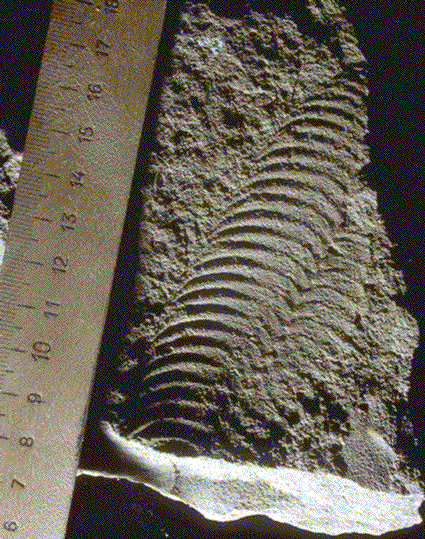Encyclopedia > Pteridinium
Pteridinium
The animal (if it is an animal) is common in late precambrian deposits in South Australia, Namibia, and the White Sea Region of Russia. It has also been found in North Carolina and is reported from California and the Canadian Northwest Territories. It has a three lobed body which is generally smashed flat such that only two lobes are visible. Each lobe consists of a number of parallel ribs extending back to the main axis where the three lobes come together. Even on well preserved specimens, there is no sign of a mouth, anus, eyes, legs, antennae, or any other appendages or organs. Specimens found in what is thought to be life positions indicate that the animal rested on -- or possibly in -- the sediment in shallow seas. No tracks are known that would seem to be consistent with a moving pternidium. It is unclear whether it made food via photosynthesis or somehow extracted nourishment from seawater despite the absence of any obvious way to ingest or eliminate sea water.
It was originally thought that pternidium might be a primitive cnidarian, but it appears that it is, at best, only very distantly related to any known cnidarian. It's relation to other known Vendazoa is no clearer. There are no identified related forms although there is some vague resemblance to other vendian forms such as Dickinsonia that share some of its enigmatic characteristics. Pternidium has no known descedants other than possibly an enigmatic Cambrian form known as Emmonaspis.
A photograph of Pterinidium is available at 
All Wikipedia text is available under the terms of the GNU Free Documentation License
|
Search Encyclopedia
|
Featured Article
|

